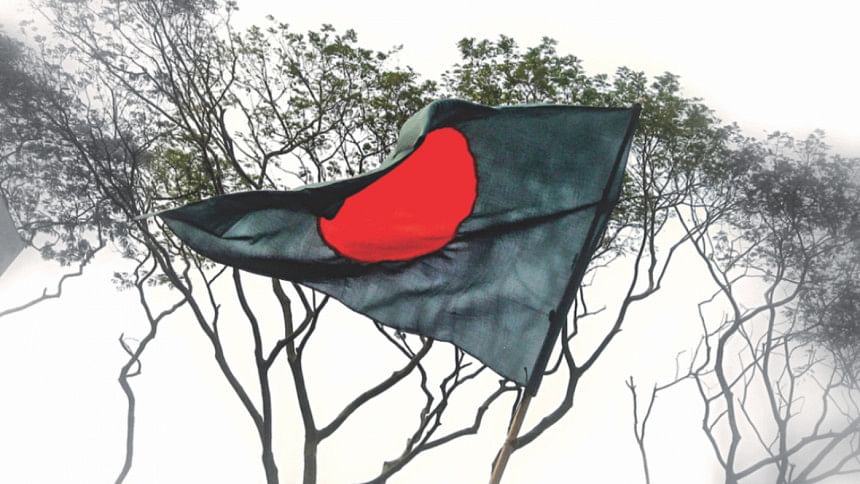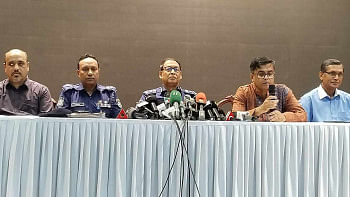Benapole stronghold: The free land of 1971

During the 1971 Liberation War, the Pakistan Army's 9th Infantry Division was deployed in the Khulna region. Supported by two additional tank squadrons, the Division was the strongest one in East Pakistan. Fighting such a Division was nearly impossible for the Mukti Bahini (the Bangladesh Liberation army), which did not have sufficient troops and arms.
But on March 31, even before the Sectors of the Bangladeshi forces were formed, the Mukti Bahini, under Bengali soldiers and bureaucrats, launched a surprise operation and liberated Jashore. However, seven days later they had to retreat due to intense artillery firing by the Pakistani troops, and Jashore fell to the enemy. Pakistani troops then rapidly advanced to Jhenaidah and occupied the town on April 17. Then they took Kushtia, which had been liberated on March 30. As a result, retreating freedom fighters from all over the Khulna front were withdrawn and gradually pushed towards Benapole.
The Pakistani forces were superior in every category and quickly made their way up to Benapole by outrunning the freedom fighters. Benapole remained the only unoccupied zone in the Khulna region. Major Abu Osman Chowdhury planned to hold Benapole at any cost.
Major Osman built a defence line in front of Benapole in the Kagojpukur area. Three Bengali paramilitary companies were deployed to hold the defence line, and one more East Bengal Regiment company was put on reserve at the Benapole headquarters of the Mukti Bahini. Some of the soldiers on the front lines didn't even have a rifle. They were outclassed by weapons but superior in courage. Pakistani troops encircled them from all three sides. The Pakistani military's strategy was penetrating the defence line, pushing them to India and sealing the border.
The refugees coming from Jashore informed the freedom fighters that the Pakistan army had deployed long range artillery pieces near Navaran. All of Benapole was under their range, and it could even shell Indian territory if needed. The artillery available to Pakistan could have turned the whole area to dust.
On April 21, a raiding party consisting of 20 Bangladeshi soldiers led by Captain Hafizuddin Ahmed raided Navaran. Marching eight kilometres to the west, they engaged their targets with mortars and rockets. The Pakistani enemy fired tracer rounds to find them but they crawled back. The next day, the Indian Signal Corps intercepted Pakistani radio messages and found that they had lost two artillery pieces. It was a successful raid but it was the opening round of a furious battle.
From April 23, enemy troops launched attacks on the Mukti Bahini. They tried to flank them from both sides. The north flank retreated but the south side was able to hold the Pakistani forces back. In the middle point, the Mukti Bahini was about to retreat but Nayeb Subeder Mujibul Haque fired his machine gun and wiped out a whole enemy platoon. The Pakistani army then resorted to deceptive tactics. Putting on East Pakistan Rifles (EPR, fighting for Bangladesh) uniforms, they started to walk to the Mukti Bahini's line like friendly troops. The right flank discovered their trick and started firing immediately. Pakistani troops failed to break through their position. Meanwhile, there were no field telephones on the battlefield. This incident in the south remained unreported to other positions.
The Pakistani army dressed as EPR came very close to Nayeb Subedar Mujibul. He refrained from firing, thinking them to be part of his own force. He understood the trick later, but by then it was too late. Bullets pierced his body. In the meantime, the mortar battery was advancing from the Mukti Bahini headquarters to behind Mujibul Haque's position. A car was carrying ammunition for the mortars. As the unprepared driver faced enemy soldiers, he abandoned the car and the mortars and ammunition fell into Pakistani hands.
After retreating from Kagojpukur, the freedom fighters quickly assembled behind the Customs Colony. There, they built new defensive positions just behind the Colony, near the border. This time, two companies of the East Bengal Regiment were put on the front line of the defence. The southern defences were set up one mile behind the Benapole checkpost.
During the last three days of April and the first week of May, Pakistani forces repeatedly attacked the Mukti Bahini's lines. They bombarded them continuously and charged with infantry again and again. The Mukti Bahini endured the barrage of shells, wave after wave, but they managed to hold their positions. The enemy used to fire 30/40 rounds of shells and charge infantry, but they failed to capture the Mukti Bahini or drive them back. The situation was a stalemate, which was costly and humiliating for the 9th Division and a tactical victory for the freedom fighters.
In early May, high ranking military and government officials met at Benapole to build a strategic plan. Foreign journalists and photographers used to come to Bangladesh during the war through Benapole. The newly formed Immigration Department of Bangladesh put an entry seal on their passports. When the BBC's Panorama broadcasted the interviews of Major Osman and Captain Hafizuddin, the world came to know that this area was part of independent Bangladesh, even in the face of the modern weapons of the Pakistani army.
The 9th Division had to send portions of their troops to other fronts as they were bogged down by hit and run attacks in parts of Khulna. Despite the Pakistan army's best assaults, the freedom fighters continued to maintain the stronghold. This part of Benapole, after being liberated by the Mukti Bahini, not once felt the boots of enemy troops on its soil.
Sartaj Alim is a final year student of Economics at Jahangirnagar University.

 For all latest news, follow The Daily Star's Google News channel.
For all latest news, follow The Daily Star's Google News channel. 



Comments